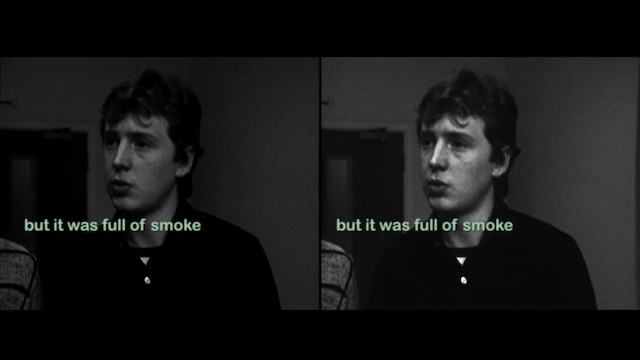The videos, sculptures and archives in Elizabeth Price’s most extensive UK survey exhibition to date draw on sources as disparate as coalmines, neckties and the Shangri-Las to present history as an ever-changing social practice rather than a static repository of information.
The British artist’s video installations play at intervals in two blacked-out rooms on opposite sides of the Whitworth’s central gallery. K (2015) works across two screens, one of which shows a flickering animation composed of thousands of still images of the sun rephotographed in the ‘K’ light that gives them their uncanny glow; the other shows a digitally animated hosiery production line. Clips of pop stars migrate between the two, while a group of professional mourners, the Krystals, provide an onscreen narrative as the mechanical loom suggests their performance of sorrow. The viewer is left to join the dots, or to consider how meaning is generated through these relationships. AT THE HOUSE OF MR X (2007), meanwhile, takes the viewer on a tour through the home of a cosmetics mogul-cum-art collector. The camera lingers on sumptuous interiors as the onscreen script (and, briefly, a voiceover) moves between registers: archival, curatorial, commercial. The effect is to unsettle the authority of any single interpretation.
The exhibition’s standout is THE WOOLWORTHS CHOIR OF 1979 (2012), a video installation bringing together archival and new material to reflect on how memories are formed in a fragmented media landscape. Commemorating the Manchester department store fire that left ten dead, and shown in the city for the first time, it is placed opposite AT THE HOUSE OF MR X – the cheap flammable armchairs pictured in the former contrasting jarringly with the latter’s sleek Bauhaus furnishings. Combining moving image, music and text, this vast projection is a hypnotic sensory assault. A slideshow lecture on choir architecture segues into a swelling girl-group chorus (“WE KNOW”), which bleeds into footage of the blaze; clips from music videos are spliced with horrified onlookers’ recollections of the incident, their gestures together forming a syncopated rhythm. The Shangri-Las’ ‘twist of the wrist’, for instance, finds its eerie counterpart in the waving arms of those trapped behind barred windows. By collaging such incongruent images and materials, Price creates an unnervingly visceral act of remembrance.
Similarly defamiliarising strategies are evident in SLOW DANS (2019), a largescale, ten-channel installation that combines KOHL (2018), FELT TIP (2018) and new work THE TEACHERS (2019) into an interrelating trilogy. In this new arrangement, the past, present and future entwine: coalmines are reimagined as underground communication networks; patterned neckties and purple markers reframed as symbols of workplace misogyny and feminist revolt; a dystopia conceived in which speech has been abandoned. Sound spills into the otherwise quiet central gallery, which houses two new works: GETT READY (2019), a collection of black-and-white pinhole photographs of bulbous tongues and bric-a-brac glassware, and INKY SPIT, FLOPPY DISQ, VOX GERL (2019), sculptural, calligraphic prints. Here the archive becomes self-referential, accommodating phrases and motifs from SLOW DANS, including the coalmine photographs of Albert Walker that informed KOHL and traced the industry’s demise under Thatcher. In an era of social amnesia and disputed histories, Price’s attention to dismantling and rebuilding the collective memory is dissident, exhilarating and necessary.
Elizabeth Price, A LONG MEMORY, The Whitworth, Manchester, 25 October through 1 March
From the January & February 2020 issue of ArtReview
